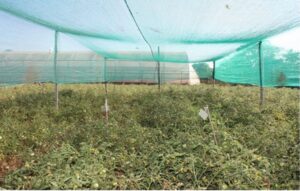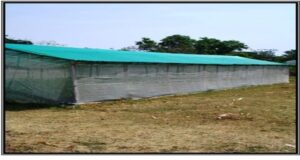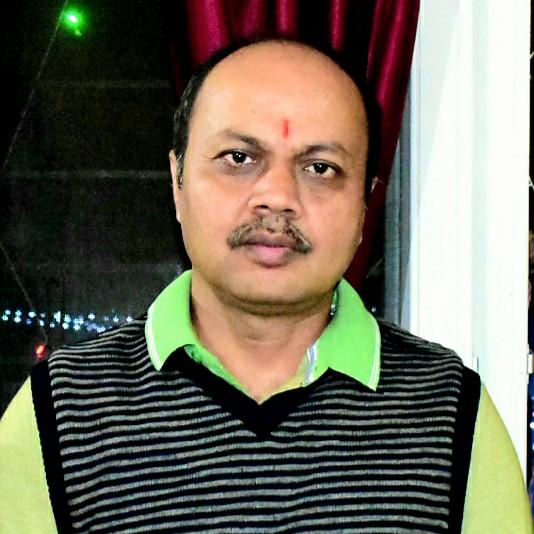THE JHARKHAND STORY NETWORK
Ranchi, March 27: With the microclimatic management technologies developed by Birsa Agricultural University (BAU), now profitable and sustainable production of quality vegetables can be taken up around the year.

The Office of Comptroller General of Patents, Designs & Trade Marks of Ministry of Commerce & Industry, Government of India, has granted Trade Mark to the Temporary Shade net Structure developed by BAU.
Application for another Trade Mark on Detachable Roof Poly house has been accepted for processing by the Ministry.

Dr Pramod Rai has developed both technologies
Both technologies have been developed by Dr Pramod Rai, Principal Investigator of BAU Centre of All India Coordinated Research Project on Plastic Engineering in Agriculture Structure and Environment Management (PEASEM). He has been working on these aspects for nearly a decade.
Dr Rai said the productivity and quality of cultivated vegetables are affected by genetic material, crop management and microclimate management. The important microclimate parameters like temperature (soil & air), light (intensity & quality), relative humidity, carbon dioxide etc for cultivated crops are managed using protected cultivation technologies.
The selection of a protected cultivation structure affects the profitability and sustainability, fixed cost, operation cost and carbon footprint of cultivated vegetables.
Also Read- Security forces neutralize six Naxals in encounter in Chhattisgarh’s Bijapur

Temporary shade net structure to enhance crop quality and productivity year-round
The cultivation of tomato and capsicum during the summer months (March-May) is problematic due to the high temperature of soil, air and light intensity. It is more than required for its successful cultivation and affects the crops productivity and quality.
The major quality concern is sunburns which affect more than 50% of fruit produced. This problem can be reduced by the cultivation of tomatoes and capsicums in permanent structure shade net (green, 35-50%) during summer months. But light intensity in the remaining months of the year (June-February) is less than the optimal level required for its cultivation.
The use of temporary shade net structure only during the summer months (March-May) enhances its utilization and cost economics. It increases the marketable quality by a minimum of 50% and productivity by 30-40% in comparison to open field cultivation under the same agronomical practices.
Due to the greenhouse effect during the summer season, the temperature of soil and air is very high under naturally ventilated polyhouses. Apart from that light intensity is also very high.

The reduction in temperature (soil & air) and light intensity is very essential to make the natural ventilation suitable for round the year cultivation.
Normally the natural ventilated polyhouse is utilized only 8-9 months during the year. The developed detachable roof polyhouse can be constructed using bamboo and cladding material.
The whole structure (except roof) is covered with UV-stabilized insect net-proof material (40 mesh) but the roof is covered with UV-stabilized film (200 microns) during rainy and winter seasons and shade net material (green, 35-50%).
The developed structure acts as polyhouse (Nov-Feb), rain shelter (June-October) and shade net (March-May). It passively cools the poly house and reduces the temperature (soil & air) and light intensity which makes it suitable for round-the-year cultivation resulting in enhanced profitability and reduced carbon footprint for cultivated crops.
Videos available on BAU’s YouTube channel
BAU Vice Chancellor Dr SC Dubey has congratulated PI, Dr Pramod Rai and DK Rusia, Associate Dean for these inventions suitable for small farmers of Jharkhand.
Details about these technologies can be seen by viewing the YouTube videos uploaded on YouTube channel of Birsa Agricultural University i.e. Temporary Shade Net Structure (https://youtu.be/PhZmEyKXEY4) and Detachable Roof Polyhouse (https://youtu.be/fy1U3Y759l8).



